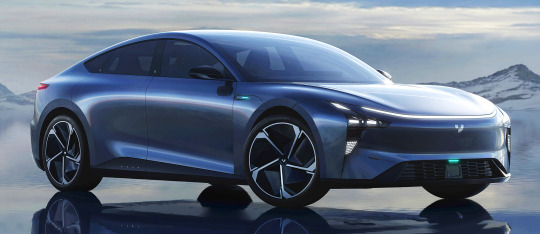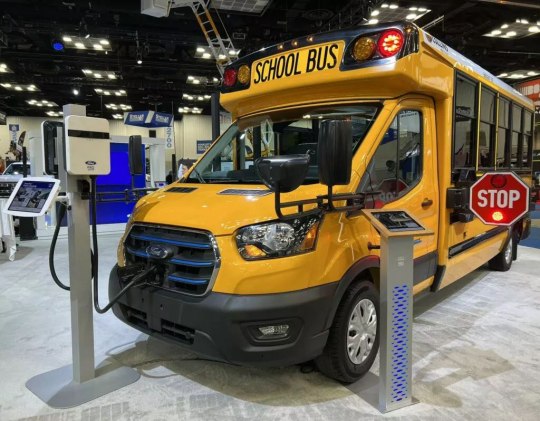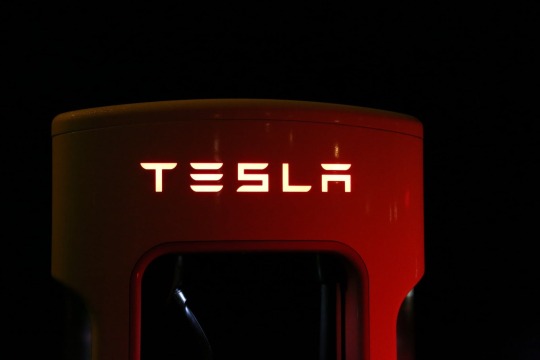#AI in autonomous driving
Explore tagged Tumblr posts
Text
IoT In Transportation Evolution: Advancements In Autonomous Vehicles
IoT solutions for transportation meet growing needs in a variety of operating conditions. Some of the key transportation IoT use cases today include:
Traffic Management: IoT applications for urban traffic management can improve both safety and traffic flow and help cities get maximum value from their infrastructure spending. Public Transportation: Transit IoT applications can improve passenger experience with amenities like information signage and high-speed Internet connectivity, enabling transit agencies to operate more efficiently. Electric Vehicles and EV Charging: The number of electric cars and EV charging stations is increasing rapidly. The entire EV infrastructure relies on IoT connectivity for system management, payment processing and more. Railways: IoT solutions support light rail and heavy commercial rail systems, and Digi is leading the way with high-performance 5G mobile access routers for reliable and secure high-speed communications and geo-positioning – even in tunnels and urban canyons. Trucking/Logistics: Fleet managers can track vehicle analytics, reduce the need for truck rolls, and automate processes to save on operational costs, including truck refrigeration monitoring and reporting.
Advancements In Autonomous Vehicles
Self-driving cars benefit from the integration of AI technology, which is driving progress in the field of autonomous vehicles by enhancing their safety, energy efficiency and environmental friendliness. Safer roads, reduced maintenance costs, improved comfort, smoother traffic and reduced energy consumption are some of the benefits of AI in autonomous driving.
Ethical Considerations in AI-Powered Autonomous Driving As the development of autonomous vehicles continues, important ethical considerations need to be taken into account, particularly regarding the role of AI in decision making.
In a scenario where an autonomous vehicle is involved in an accident, who is responsible – the vehicle owner, the car manufacturer or the AI system?
Additionally, there are concerns about the ethical implications of AI-powered vehicles making decisions that involve human lives, such as an autonomous car having to choose between avoiding pedestrians and moving into another lane with other vehicles.
To address these concerns, car manufacturers and researchers are working on developing ethical guidelines for the use of AI in autonomous vehicles. One approach is to program an AI system to prioritize human safety above all else.
However, it still raises complex ethical dilemmas, such as deciding whose safety takes precedence in a given situation. Debates continue about how to balance the benefits of autonomous driving with the potential risks and ethical implications.
The advent of AVs will transform transportation and logistics. Advanced technology and safety improvements will revolutionize the movement of goods and people. Challenges such as security, regulation and infrastructure readiness must be navigated in this autonomous journey.
AV implications go beyond hands-free driving. They promise safer roads, less congestion, better accessibility and environmental sustainability. Economic opportunities arise in urban planning, workforce transformation and vehicle management and data analytics. AVs are redefining mobility, providing transportation as a service and empowering those with limited mobility options.
Despite obstacles such as technological limitations and regulatory frameworks, the future of AVs looks promising. As technology advances and trust increases, greater integration in transportation systems is expected.
Read: Cost to Development eScooter Sharing App
The future of travel will involve more than self-driving cars; It's about reimagining how we move people and things. Collaboration between governments, manufacturers, researchers and the public is critical. Addressing challenges, encouraging innovation and responsible deployment unlocks the full potential of AVs, delivering safer, more efficient and sustainable transport and logistics.
Read:
How Much Does it Cost to Develop an Automotive Mobile App Development?
The rise of autonomous vehicles is not just a technology, but a paradigm shift in transportation thinking. It is an opportunity to rebuild cities, create jobs and make transport inclusive and environmentally friendly. Embrace the opportunities offered by AVs and work towards a future of safer, smarter and more connected transport.
FAQ's
Why are autonomous vehicles becoming mainstream?
Autonomous vehicles are becoming mainstream thanks to advances in technology and trials for driverless cars taking place in American cities.
2. What is the current status of driverless car trials? Driverless car trials are currently underway in cities across America, bringing autonomous vehicles into the mainstream.
3. What are the technological advances in driving autonomous vehicles? Advances in technology such as Artificial intelligence and sensor technology are leading to the development of autonomous vehicles.
4. What are the potential benefits of autonomous vehicles? Potential benefits of autonomous vehicles include improved road safety, reduced traffic congestion and increased mobility for people with disabilities.
5. What are the concerns surrounding autonomous vehicles? Concerns surrounding autonomous vehicles include cybersecurity risks, job displacement for drivers, and ethical considerations for decision-making algorithms.
Read: The Best 13 AI App Development Companies List
0 notes
Text
Since y'all liked that post about Tesla removing the gear selectors in their cars, did you also know that Elon Musk is promising v12.0 of Autopilot Full Self Driving will be "much better" than previous versions. He's claiming it will be the first version without the "Beta" label and will be basically as good or better than a human driver. To show this off, he took to Twitter Live and streamed a 45-minute drive from Twitter HQ to Mark Zuckerburg's house. Live doxxing aside, the best part of this live stream was
A: When the vehicle came to a stop at a red light, waited a few seconds, and then attempted to run the red light while traffic was actively going through the intersection, causing Musk to slam on the brakes and deactivate the system.
B: When the vehicle got caught in a Yellow Light and was taking way longer than necessary to stop, prompting a verbal "I hope it stops," panic from Musk.
Full Self Driving my ass.
#rambles#tesla#elon musk#fuck tesla#fuck elon musk#ai#autonomous cars#car#cars#self driving#public transportation#fuck cars
301 notes
·
View notes
Text




Jidu ROBO-02 Concept, 2023. Fledgling autonomous EV marque Jidu have revealed a second model in concept form. Few details have been disclosed about the robotic saloon, it's SUV sibling model the ROBO-01 is equipped with two Nvidia Orin X chips that deliver up to 508 TOPS of computing power. These help control 31 different sensors, including 2 LiDARs, 5 millimeter-wave radars, 12 ultrasonic radars, and 12 high-definition cameras. Like 01 the 02 does without door handles, instead the doors can be opened using voice command or bluetooth.
#Jidu#Jidu ROBO-02#concept#prototype#2023#autonomous#EV#electric car#self driving cars#robot car#AI#design study
93 notes
·
View notes
Text

#tesla#elon musk#robotics#robots#ai#self driving vehicles#self driving cars#autonomous driving#autonomous vehicles
2 notes
·
View notes
Text

الكل على متن أول حافلة مدرسية ترانزيت كهربائية بالكامل من فورد E-Transit Van
#electric car#self-driving cars#technology#smartcity#emobility cars mobility robot driverlesscars robotics ai guidaautonoma autonomous electricvehicles
7 notes
·
View notes
Text
The DARK SIDE of AI : Can we trust Self-Driving Cars?
Read our new blog and follow/subscribe for more such informative content. #artificialintelligence #ai #selfdrivingcars #tesla
Self-driving cars have been hailed as the future of transportation, promising safer roads and more efficient travel. They use artificial intelligence (AI) to navigate roads and make decisions on behalf of the driver, leading many to believe that they will revolutionize the way we commute. However, as with any technology, there is a dark side to AI-powered self-driving cars that must be…

View On WordPress
#AI and society#AI safety#artificial intelligence#Autonomous driving#Autonomous vehicles#Cybersecurity#Dangers of AI#Driverless cars#Ethics of AI#Future of transportation#Human error#machine learning#Potential dangers#Regulations for self-driving cars#Risks of self-driving cars#Road safety#Safety concerns#Self-driving cars#Technological progress#Trust in technology
16 notes
·
View notes
Text
semi recently i was precomatose in the icu because of an automated technical malfunction and when i mentioned this to one of my medical team the other day he was like "you seem pretty unbothered at that", and my thought was well it's not like it was a design flaw or anything so what's the point being bothered if i a) have nobody to be bothered at and b) am glad and happy to have survived so why shouldn't i celebrate that instead of moping (however this is my attitude towards myself, other people are a completely different matter)
anyway this is going to be an increasingly interesting train of thought/conversation to be had at some point, the more we become reliant on tech, algorithms and ai in general in our lives and infrastructure
at some point things will happen where blame needs to be placed and i feel like we should start thinking about that earlier rather than when it inevitably happens on a large scale
#health tech#tech reliance#tech ethics#ai#corporate ai#voice assistance services#self driving vehicles#look at me dreaming about justice over here#disability tumblr#disability#chronic illness#autonomous vehicles#lukewarm takes
1 note
·
View note
Text
1 note
·
View note
Text
Why Electric Pickup Trucks Are Gaining Popularity
The automotive world is witnessing a significant shift, and one of the most interesting developments in recent years has been the rise of electric pickup trucks. As environmental awareness continues to grow, consumers are looking for alternatives that deliver both performance and sustainability. This change in mindset, coupled with advancements in battery technology, has made electric pickup…
#ADAS#advanced transport#AI cars#autonomous tech#autonomous vehicles#carbon emissions#city car#city driving#Clean Energy#clean transport#connected cars#Eco-Friendly Cars#eco-technology#electric cars#electric SUV#electric transport#electric vehicles#emission reduction#energy efficiency#EVs#fuel efficiency#future of transport#green cities#hybrid cars#low emissions#modern cities#pollution reduction#ride-sharing#safety features#self-driving
0 notes
Text
Robotaxi Market Share, Sales Channels and Overview Till 2030
The Robotaxi Market was valued at USD 0.5 billion in 2023 and will surpass USD 42.1 billion by 2030; growing at a CAGR of 88.4% during 2024 - 2030. These autonomous vehicles, designed to operate without a human driver, are poised to revolutionize urban mobility, offering a glimpse into a world where transportation is safer, more efficient, and more accessible. The robotaxi market, though still in its nascent stages, is growing at an unprecedented pace, driven by advances in artificial intelligence, machine learning, and automotive technology.
The concept of robotaxis represents a paradigm shift in how we think about transportation. Unlike traditional taxis or ridesharing services, robotaxis are fully autonomous, relying on a combination of sensors, cameras, and sophisticated algorithms to navigate complex urban environments. This autonomy eliminates the need for a human driver, which not only reduces operating costs but also addresses some of the key challenges facing the transportation industry, such as driver shortages and safety concerns.
Get a Sample Report: https://intentmarketresearch.com/request-sample/robotaxi-market-3650.html
Market Growth and Key Players
The robotaxi market is expected to witness significant growth over the next decade, driven by the increasing demand for autonomous vehicles and the rapid development of supporting technologies. Major automotive manufacturers, technology companies, and startups are all vying for a share of this emerging market. Companies like Tesla, Waymo (a subsidiary of Alphabet Inc.), and Cruise (backed by General Motors) are leading the charge, each with their own approach to developing and deploying robotaxi fleets.
In addition to these established players, numerous startups are entering the fray, bringing innovative solutions to the table. For instance, companies like Zoox, Aurora, and Nuro are exploring different aspects of the robotaxi ecosystem, from vehicle design to software development, contributing to the overall growth and diversification of the market.
Benefits and Challenges
The widespread adoption of robotaxis promises numerous benefits, both for consumers and society at large. For consumers, robotaxis offer a convenient, on-demand transportation option that is likely to be more affordable than traditional taxis or ridesharing services, thanks to the elimination of driver-related costs. Moreover, the use of electric vehicles in robotaxi fleets can contribute to reducing greenhouse gas emissions, supporting the global push towards sustainable transportation.
From a societal perspective, robotaxis have the potential to significantly reduce traffic accidents, the vast majority of which are caused by human error. Autonomous vehicles are designed to operate with a high degree of precision and can communicate with other vehicles and infrastructure in real time, minimizing the risk of collisions.
However, the transition to a robotaxi-dominated transportation landscape is not without its challenges. Regulatory hurdles, cybersecurity concerns, and the need for robust infrastructure to support autonomous vehicles are all significant obstacles that must be addressed. Additionally, the impact on employment in the transportation sector cannot be overlooked, as the widespread adoption of robotaxis could lead to job losses for drivers.
The Road Ahead
As the robotaxi market continues to evolve, it is clear that we are on the cusp of a transportation revolution. The benefits of autonomous vehicles are undeniable, but the road to widespread adoption will require careful navigation of the various challenges that lie ahead. Governments, businesses, and consumers all have a role to play in shaping the future of transportation.
For businesses, investing in the development and deployment of robotaxi technology presents a significant opportunity. Those who can successfully navigate the technical and regulatory challenges will be well-positioned to capitalize on the growing demand for autonomous transportation services.
For consumers, the advent of robotaxis promises to make urban mobility more convenient, affordable, and sustainable. As the technology matures and becomes more widely available, it is likely that robotaxis will become a common sight on our streets, reshaping the way we think about transportation.
Get an insights of Customization: https://intentmarketresearch.com/ask-for-customization/robotaxi-market-3650.html
Conclusion
the rise of robotaxis represents a bold step forward in the evolution of transportation. While challenges remain, the potential benefits are immense, making the robotaxi market one of the most exciting and dynamic sectors to watch in the coming years.
#Autonomous taxi#Self-driving taxi#Driverless taxi#Robo-cab#Autonomous ride-hailing vehicle#Driverless ride service#AI-powered taxi
0 notes
Text
Emerging Tech Trends in the Internet of Things (IoT)
Introduction
The Internet of Things (IoT) is transforming our world by connecting devices and enabling smarter, more efficient interactions. In everything from smart homes to industrial automation, the IoT is leading a revolution in our living and working environments. In this article, TechtoIO explores the emerging tech trends in IoT, highlighting the innovations and advancements that are shaping the future. Read to continue link
#Innovation Insights#Tags5G IoT#AI in IoT#autonomous vehicles IoT#big data IoT#edge computing IoT#future of IoT#IIoT#industrial IoT#Internet of Things#IoT data analytics#IoT healthcare#IoT innovations#IoT security#IoT technology#IoT trends#smart cities IoT#smart homes#wearable IoT#Technology#Science#business tech#Adobe cloud#Trends#Nvidia Drive#Analysis#Tech news#Science updates#Digital advancements#Tech trends
1 note
·
View note
Text
Fun Fact: The whole “AI favoriting white people” thing isn’t just a problem with image generation and job applications. Autonomous Driving Assistant Systems (ADAS) are also worse at detecting black people. This includes everything from Tesla’s Full-Self Driving and General Motor’s Super Cruise to a Honda Fit’s basic Automatic Emergency Braking (AEB) system. The systems all have trouble detecting people with darker complexions and stopping the vehicles like they’re supposed to.
4 notes
·
View notes
Text
The Impact of AI and Automation on the Trucking Industry
Photo by Ricky Esquivel on Pexels.com So, we’ve all heard about the buzz around AI and automation in the trucking industry, right? It’s pretty fascinating stuff. I know it sounds all high-tech and futuristic, but it’s really changing the game for truckers in ways that are super practical and beneficial. First off, there’s predictive maintenance. Imagine you’re on the road, hauling a load, and…

View On WordPress
#AI and truck safety#AI driving systems#AI for truck maintenance#AI for truckers#AI in logistics#AI in transportation#AI in trucking#AI route planning#AI transportation management#AI truck efficiency#AI truck technology#AI trucking solutions#automated load matching#automated trucking#automation in trucking#autonomous driving trucks#autonomous trucks#business#cash flow management#digital freight platforms#driver assistance systems for trucks#Freight#freight industry#Freight Revenue Consultants#logistics#predictive maintenance for trucks#route optimization for truckers#small carriers#Transportation#truck automation benefits
0 notes
Text




1 note
·
View note
Video
youtube
The Future of Autonomous Vehicles
#youtube#ai autonomous cars electric self-driving vehicles education tips tutorial lecturer presenter
0 notes
Text
Tesla Autonomous Driving Update
Tesla's autonomous driving mode now visualizes the turn signals of other vehicles with the latest update.
0 notes